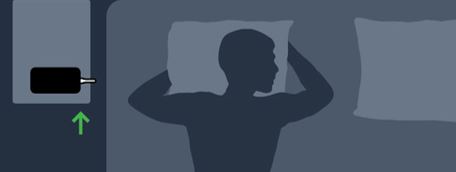Measurement Sleepphase
Back to literature: Literature
Back to main page: PRE2015_3_Groep4
scientific background of measurements
The sleepphase could be determined on several ways. It is possible to measure your sleepphase with the aid of your heartbeat, respiration, movements and brainacitivity. Not all, but some of these are useful for our technology. The picture below shows the relation between the sleepphase and these measurable quantities. [1]
Brainactivity is naturally not possible to measure in our case. Also the heartbeat can't be measured on a distance yet. But the sleepphase can be determined with the aid of the movements and respiration. The muscle activity has a releation with the sleepphase. As you can see in the figure above, the muscle activity decreases when you get into a deeper sleep. And the muscle activity is very high during the REM-sleep. The muscle activity is shown with electro-oculogram (EOG) and electromyogram (EMG). EOG measures the activity of muscular and autonomic functions, while EMG the movement of neck muscles measures. A typical consequense of the higher muscle activity during the REM-sleep is a penile erection. Like you can see in the picture above, during every REM-sleep period are many penile erections measured. So if you wake up with an erection, you were probably in a REM-sleep.
The sleepphase can also be determined with the aid of respiration. As shown in the figure above, there is a strong relation between the breaths per minute and the sleepphase. Because of this strong relation, we'll use this technique in the smart bedroom. The respiration can easily be measured by your smartphone. You’ve to place your phone like this while you're sleeping:[2]
practical issues
There are some footnotes. The first one is the calibration period which is needed. This seems quite logic, because not every person produces the same amount of decibels while he is breathing. But you have also take in mind that some people snore in their sleep. So because of these fluctuations between persons, you can't prevent a calibration period. This period is maximal five days. Another footnote is sleeping together. There isn't any scientific research done on this field. But there are already Apps[3] which claims that they can measure the sleeppahse of a single person when that person is sleeping together with another person. They give the following explanation:
Sound decays exponentially with distance. So the sound generated by your partner will have a much lower volume than the sound generated by yourself. This makes it possible to determine where a sound originates from with an accuracy of 30 cm.
Because they don't have a hard proof for this assertion, we'll explore this by ourself. We will do this as follow: Two persons are sleeping together, and both persons will use an existing App which will measure the sleep cycles. Both persons will also wear a bracelet which measures and stores the heartbeat.
After the measuring, the data of the heartbeat and the data of the app will be compared. If the data of the heartbeat agree with the data of the app, the sleepcycles are correct. Then, we can conclude that the App can measure the sleepcycle of a single person when he's sleeping together.
References
- ↑ D Purves, G.J. Augustine, D. Fitzpatrick, M.A. Sunderland, Neuroscience (2001), 2nd edition, http://www.ncbi.nlm.nih.gov/books/NBK10996/ (The information at this site is coming from this book)
- ↑ Sleep Cycle (App), How does it works, http://www.sleepcycle.com/howitworks.html
- ↑ Sleep Cycle (App), Support, During sleep, http://www.sleepcycle.com/support.html

